
The rapid proliferation of blockchains has driven innovation but also resulted in a fragmented Web3 landscape. Users and liquidity are scattered across dozens of networks, each with their own wallets, assets, and technical quirks. This fragmentation not only complicates user experience but also hinders capital efficiency and developer productivity. Chain abstraction has emerged as a promising solution to these persistent silos, with protocols like Socket Protocol leading the charge in delivering seamless cross-chain interactions.

What Is Chain Abstraction? The Foundation for a Unified Web3
At its core, chain abstraction is about decoupling the user journey from the underlying blockchain infrastructure. Instead of forcing users to juggle multiple wallets, switch between networks, or manage diverse gas tokens, chain abstraction allows them to interact with decentralized applications (dApps) through a single, unified interface. The goal is to make Web3 feel as intuitive as Web2 platforms, removing barriers that have historically stunted adoption.
This approach is not just theoretical. As noted by Blockworks, chain abstraction enables users to seamlessly access dApps and assets across different blockchains without needing to understand or even be aware of the underlying chains themselves. This shift is critical for onboarding mainstream users and unlocking new levels of liquidity aggregation in ecosystems like Solana DePIN.
Socket Protocol: Pioneering Cross-Chain Interoperability
Socket Protocol stands out as one of the first true chain abstraction protocols. Rather than serving merely as a cross-chain aggregator, Socket leverages a powerful architecture designed for composability and extensibility across more than 300 blockchains. Its flagship feature provides Modular Order Flow Auctions (MOFA): creates an open marketplace where specialized execution agents compete to fulfill user requests. This mechanism ensures optimal execution efficiency and best pricing for users seeking cross-chain transactions.
The impact on developer experience is equally significant. By abstracting away interoperability challenges, Socket enables builders to compose with any app, asset, or user across supported chains without being bogged down by integration headaches or bridge risk. As highlighted by Eco, this paradigm shift empowers dApps to operate fluidly across ecosystems, a crucial advancement for projects focused on DePIN interoperability on Solana and beyond.
Breaking Down Silos: Key Benefits of Chain Abstraction Infrastructure
Key Benefits of Chain Abstraction in Web3
-
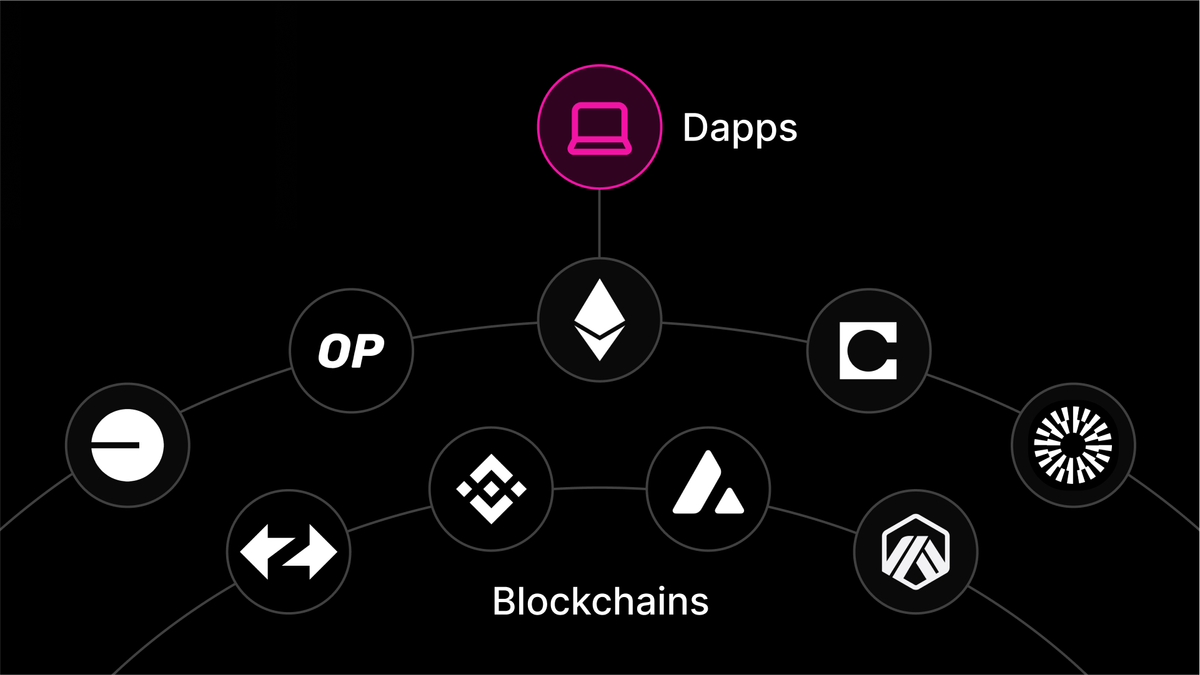
Simplified User Experience: Chain abstraction enables users to interact with decentralized applications across multiple blockchains through a single, unified interface—eliminating the need to manage multiple wallets, switch networks, or handle chain-specific gas fees.
-
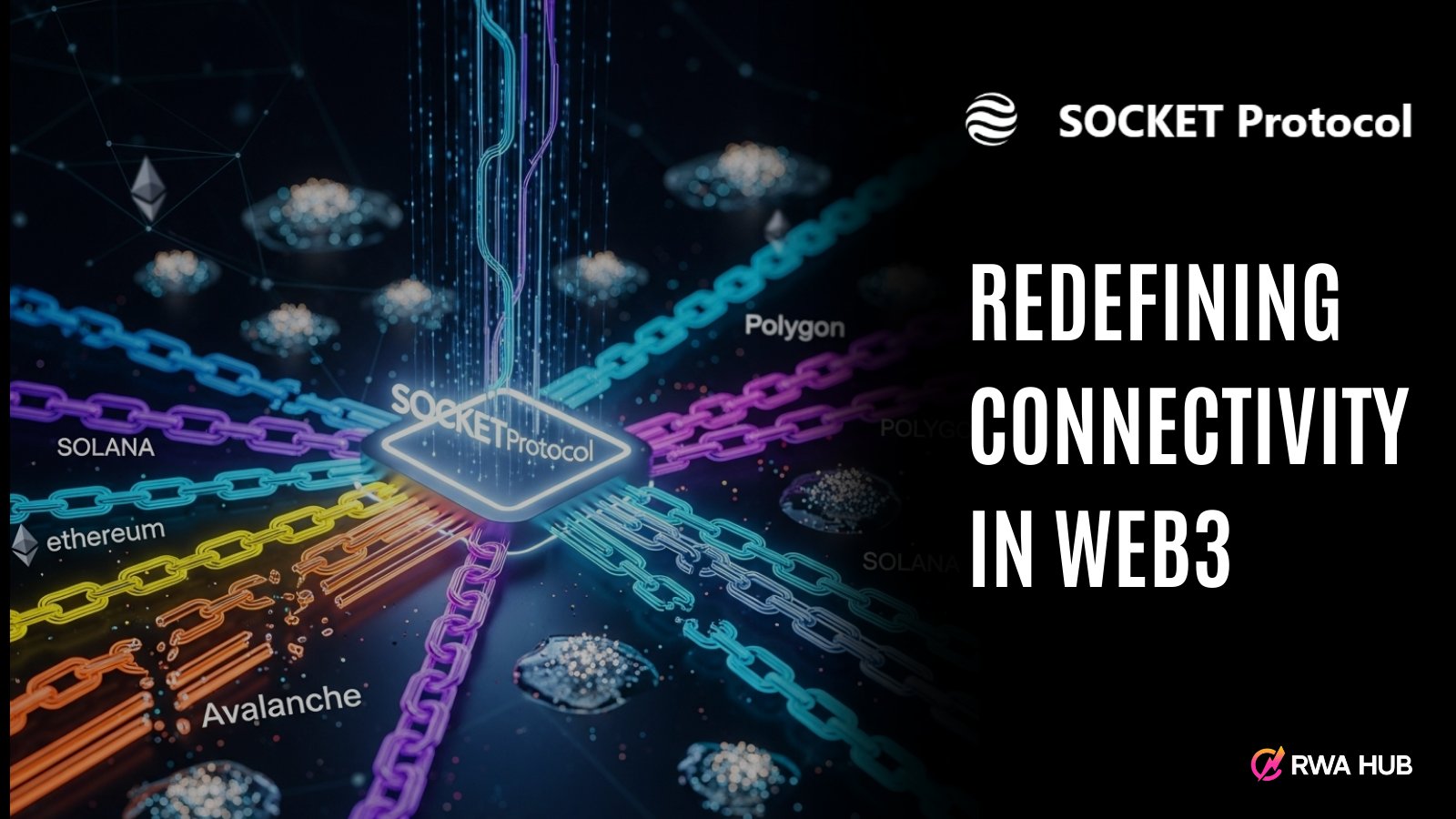
Seamless Cross-Chain Interactions: With protocols like Socket Protocol, users can access and utilize assets on any supported blockchain without worrying about the underlying infrastructure or using bridges.
-
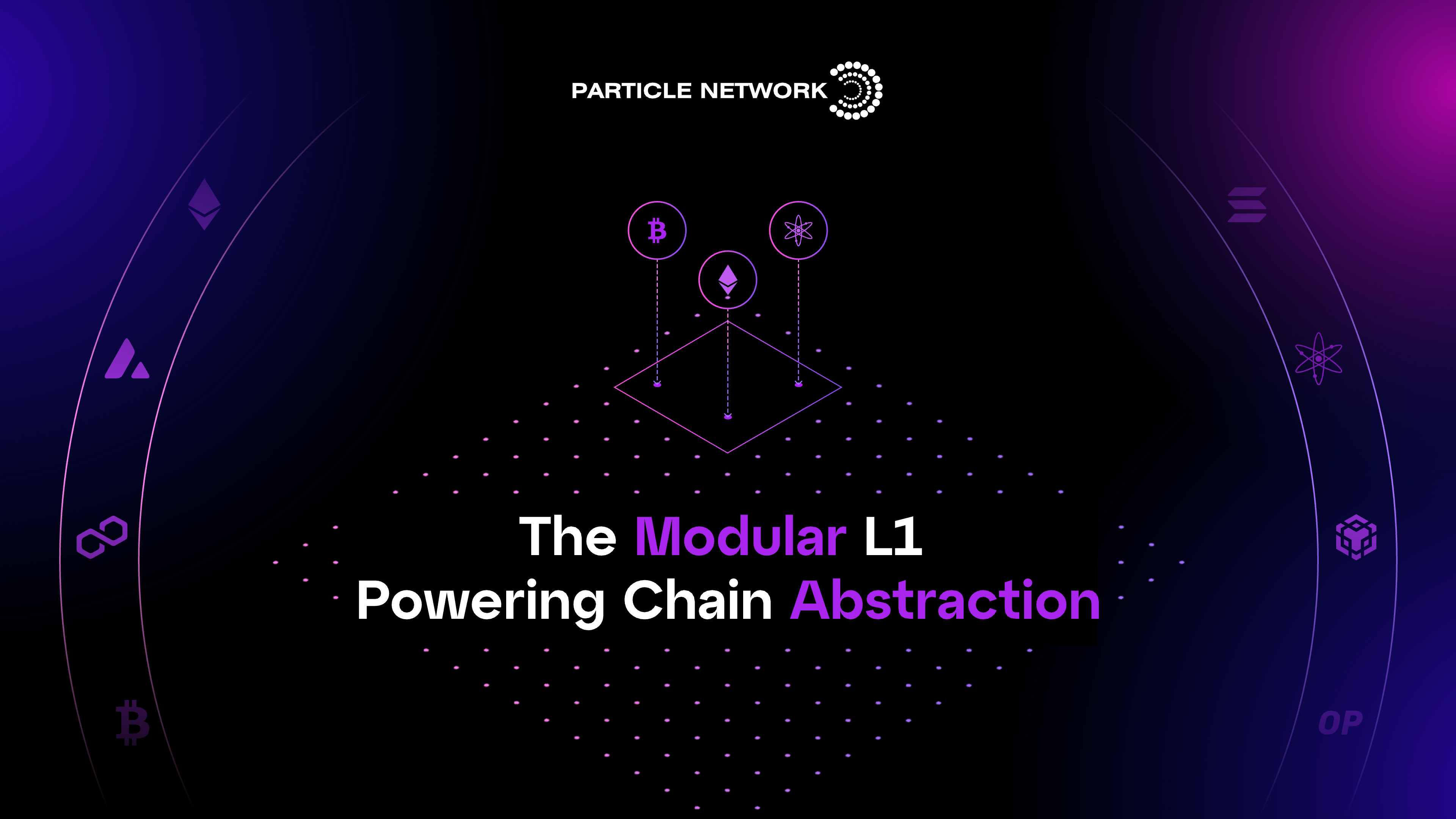
Unified Liquidity Access: Chain abstraction consolidates liquidity that was previously fragmented across different networks, allowing liquidity providers to reach broader markets and improve capital efficiency.
-
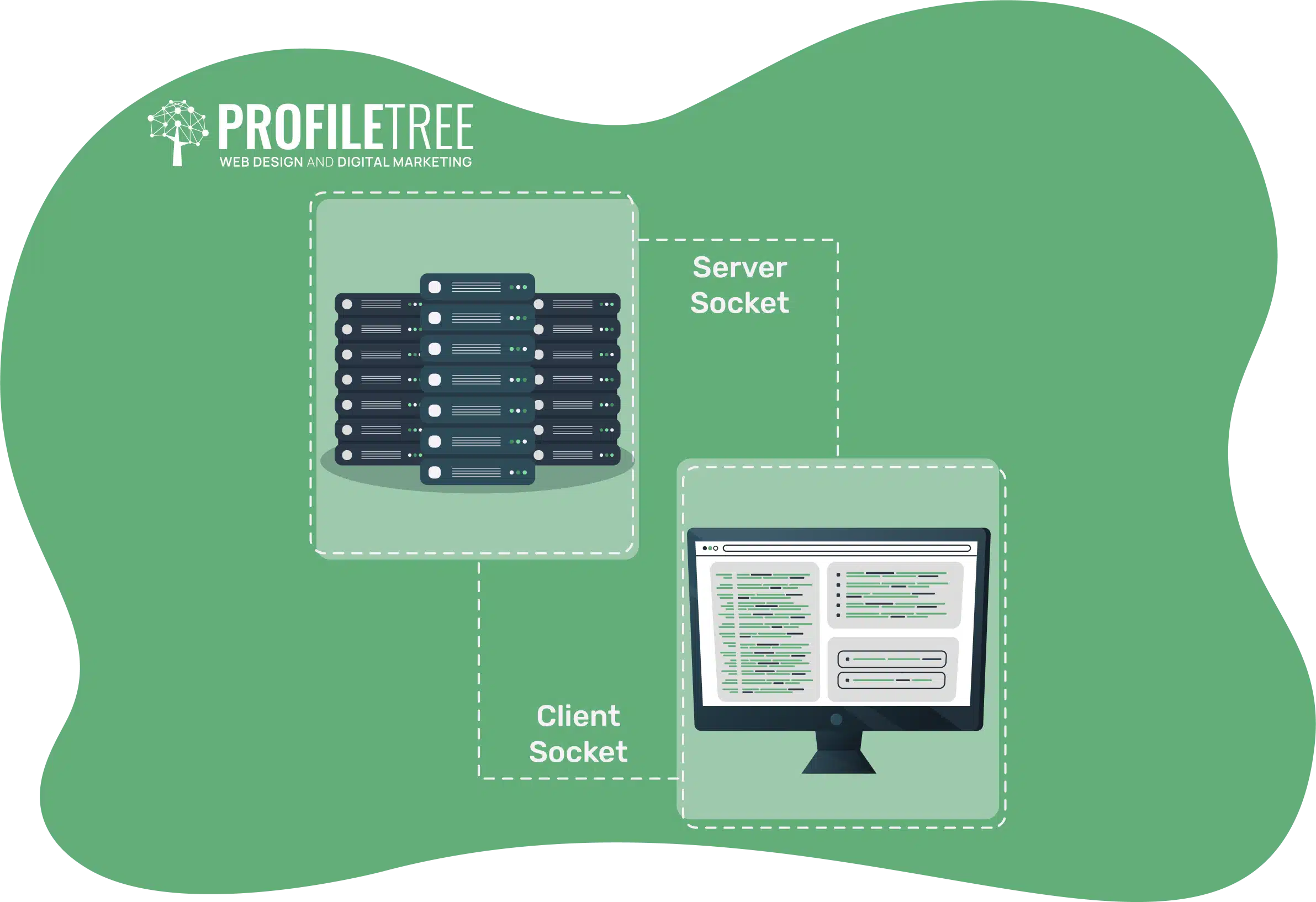
Developer Empowerment: Developers can build chain-agnostic applications using frameworks like Socket Protocol, focusing on user experience and innovation rather than the complexities of multi-chain infrastructure.
-
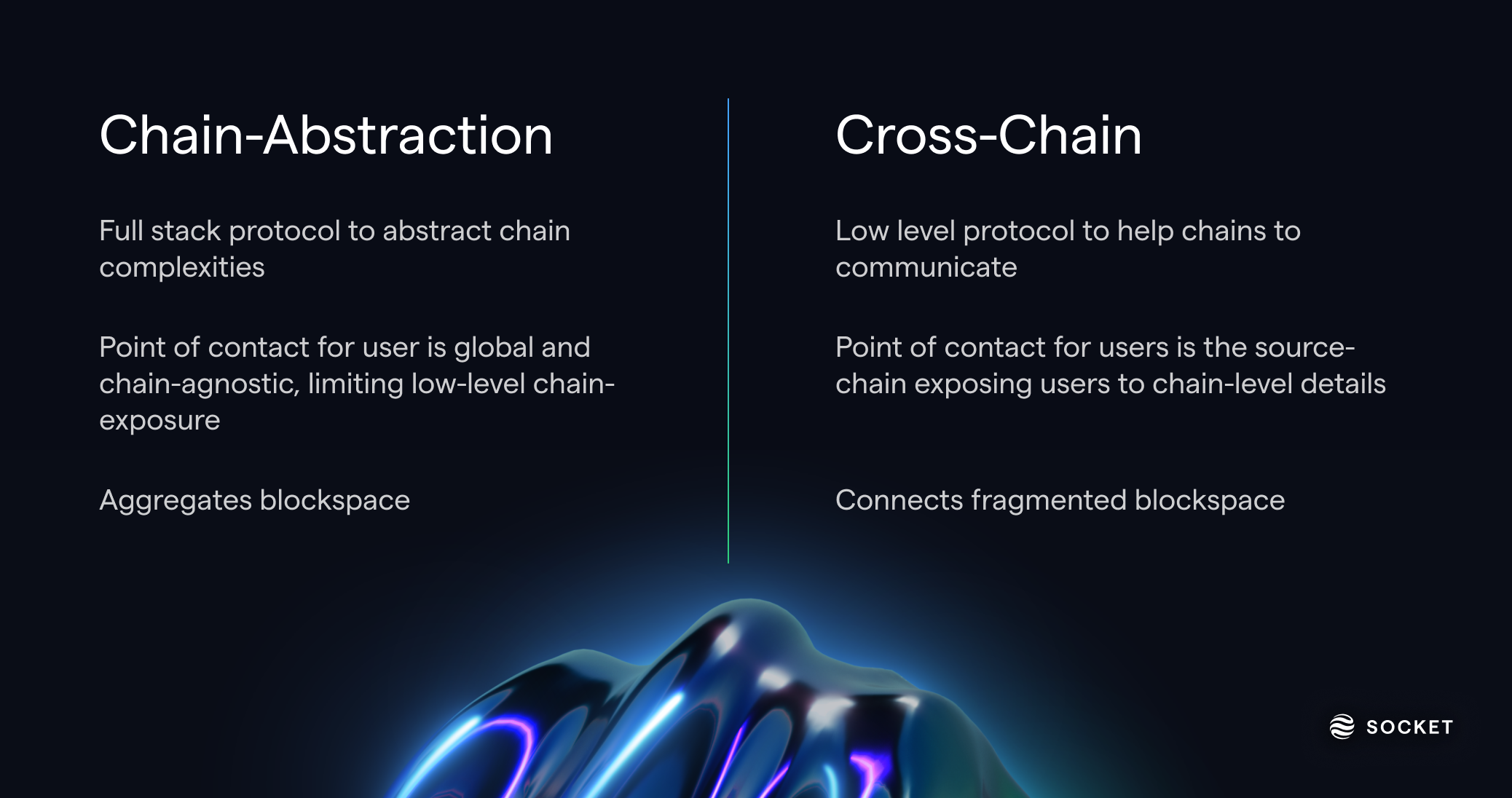
Optimal Transaction Execution: Modular Order Flow Auctions (MOFA), as implemented by Socket Protocol, create a competitive environment for execution agents, ensuring users receive the most efficient and cost-effective transaction outcomes.
-
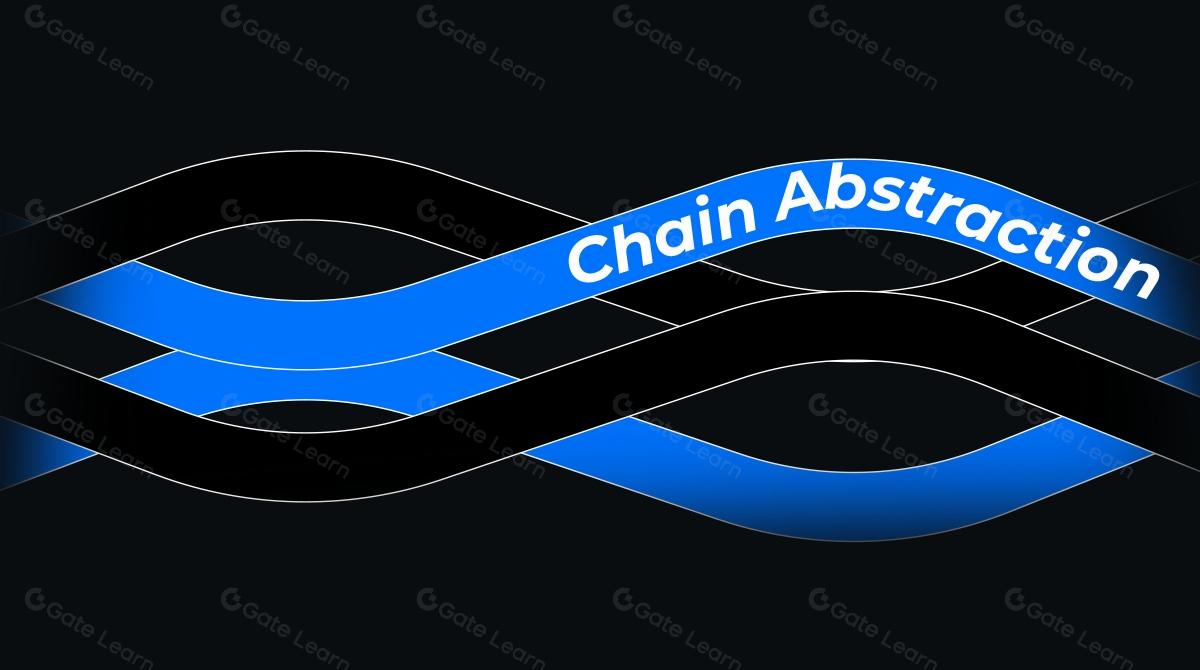
Web2-Like Simplicity: Initiatives like the NEAR and Socket Chain Abstraction Framework deliver familiar, intuitive experiences for users, making decentralized apps more accessible and driving broader adoption.
The significance of breaking down Web3 silos extends far beyond convenience:
- User Experience: Users no longer need to maintain multiple wallets or manually bridge assets between chains; instead they interact through a single wallet interface regardless of where their assets reside.
- Liquidity Unification: By aggregating liquidity across chains via protocols like Socket, previously isolated capital becomes accessible for broader use cases such as lending markets or DePIN resource allocation.
- Developer Empowerment: With infrastructure abstracted away, developers can focus on building differentiated features rather than low-level integrations, accelerating innovation within the Solana DePIN ecosystem and beyond.
This convergence is already reshaping how consumer apps are built and experienced in crypto-native environments.
The NEAR and amp; Socket Collaboration: Towards Frictionless Multi-Chain Consumer Apps
A major milestone arrived in late 2024 when NEAR Protocol partnered with Socket to launch the Chain Abstraction Framework for Consumer Apps. This collaboration aims to deliver web2-like simplicity by allowing users unified access to all their assets across chains, without managing bridges or gas tokens. Developers are now empowered to prioritize user experience over backend complexity, accelerating mainstream adoption potential for DePIN solutions on Solana and other networks.
These advances are not occurring in isolation. The broader Web3 community is increasingly recognizing the necessity of chain abstraction as a foundational layer for the next phase of decentralized infrastructure. As new DePIN projects on Solana and other high-performance blockchains seek to onboard users and unlock cross-chain value, the demand for seamless interoperability will only intensify.
Socket Protocol’s rapid adoption underscores this trend. With support for over 300 blockchains and rollups, Socket is uniquely positioned to serve as the connective tissue between fragmented ecosystems. This capability is especially relevant for DePIN networks, where resource allocation, data sharing, and economic incentives often span multiple chains.
Real-World Impact: Chain-Agnostic UX and Liquidity Aggregation
For end users, chain abstraction delivers a tangible improvement in usability. Instead of navigating a labyrinth of wallets and bridges, users engage with dApps through a single interface, regardless of whether their assets reside on Solana, Ethereum, or any other network. This chain-agnostic UX reduces onboarding friction and encourages broader participation in DePIN initiatives.
Liquidity providers also benefit substantially. By aggregating liquidity across multiple chains, protocols like Socket help unify previously siloed capital pools. This not only improves market depth for cross-chain swaps but also supports more robust lending markets and resource allocation mechanisms, key features for the growth of decentralized infrastructure on Solana.
Challenges Ahead: Security, Governance, and User Education
Despite these advances, several challenges remain as chain abstraction matures:
- Security: Cross-chain protocols must maintain rigorous security standards to prevent exploits that could compromise assets across interconnected networks.
- Governance: As more stakeholders rely on chain abstraction infrastructure, transparent governance models will be necessary to coordinate upgrades and manage risk.
- User Education: While abstraction simplifies UX, ongoing education is vital so users understand the implications of interacting across chains, especially in terms of custody and transaction finality.
The industry’s response to these challenges will shape the trajectory of Web3’s evolution toward true interoperability.
What’s Next for Chain Abstraction on Solana?
The future looks promising for chain abstraction within the Solana ecosystem. As DePIN projects grow in complexity and ambition, their need for fluid cross-chain connectivity will continue to rise. Socket Protocol’s composable architecture is well-suited to meet this demand, enabling developers to build applications that leverage best-in-class features from any blockchain without sacrificing security or user experience.
Top 5 Use Cases Enabled by Socket Protocol
-
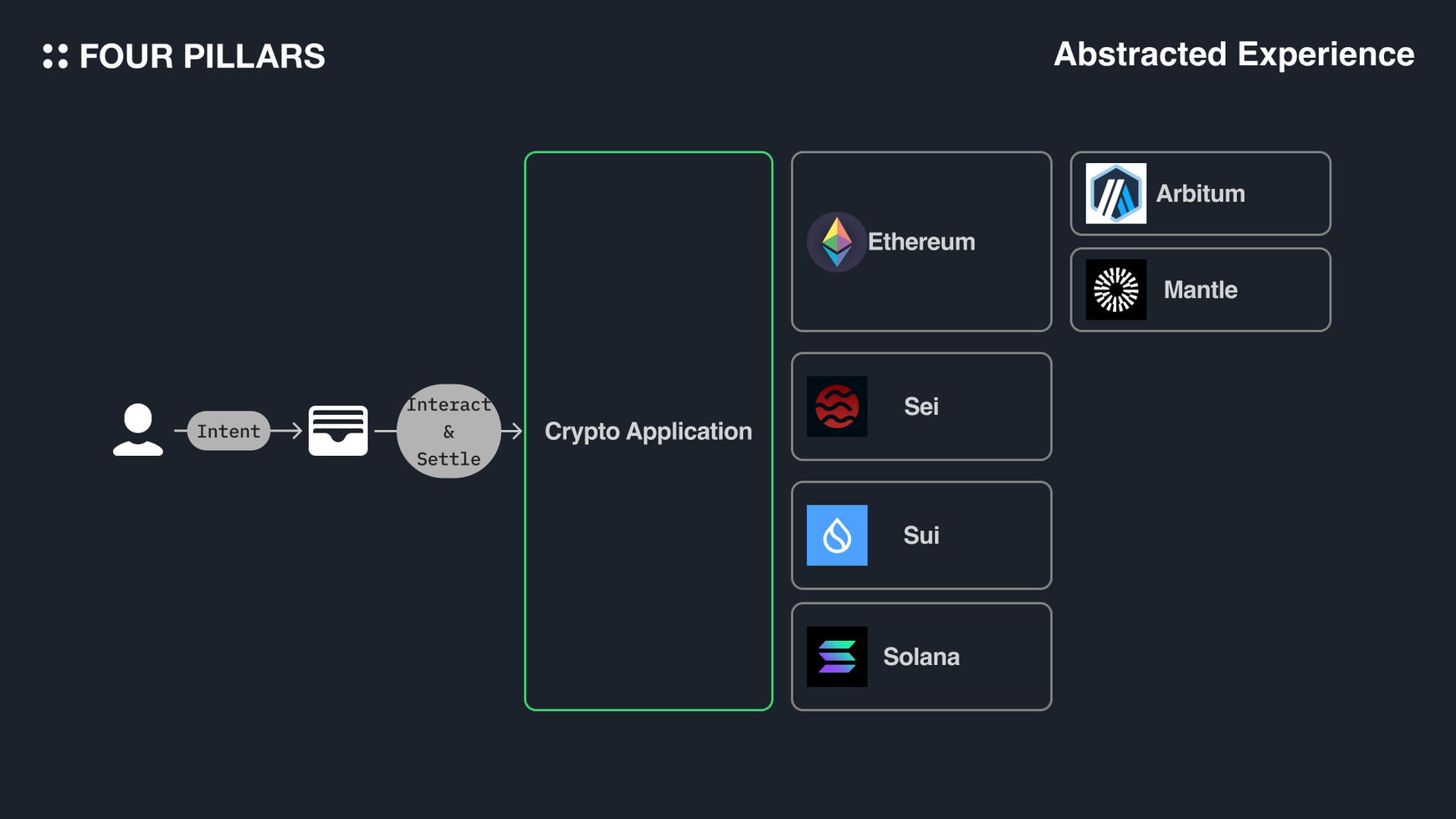
Unified Cross-Chain Asset Transfers: Socket Protocol enables users to move assets seamlessly across 300+ blockchains, eliminating the need for manual bridges or multiple wallets. This unified experience streamlines portfolio management and reduces friction for both retail and institutional users.
-

Chain-Agnostic dApp Development: Developers can build decentralized applications that operate across any supported blockchain, thanks to Socket’s modular infrastructure. This empowers dApps to tap into broader user bases and liquidity pools without being restricted to a single network.
-
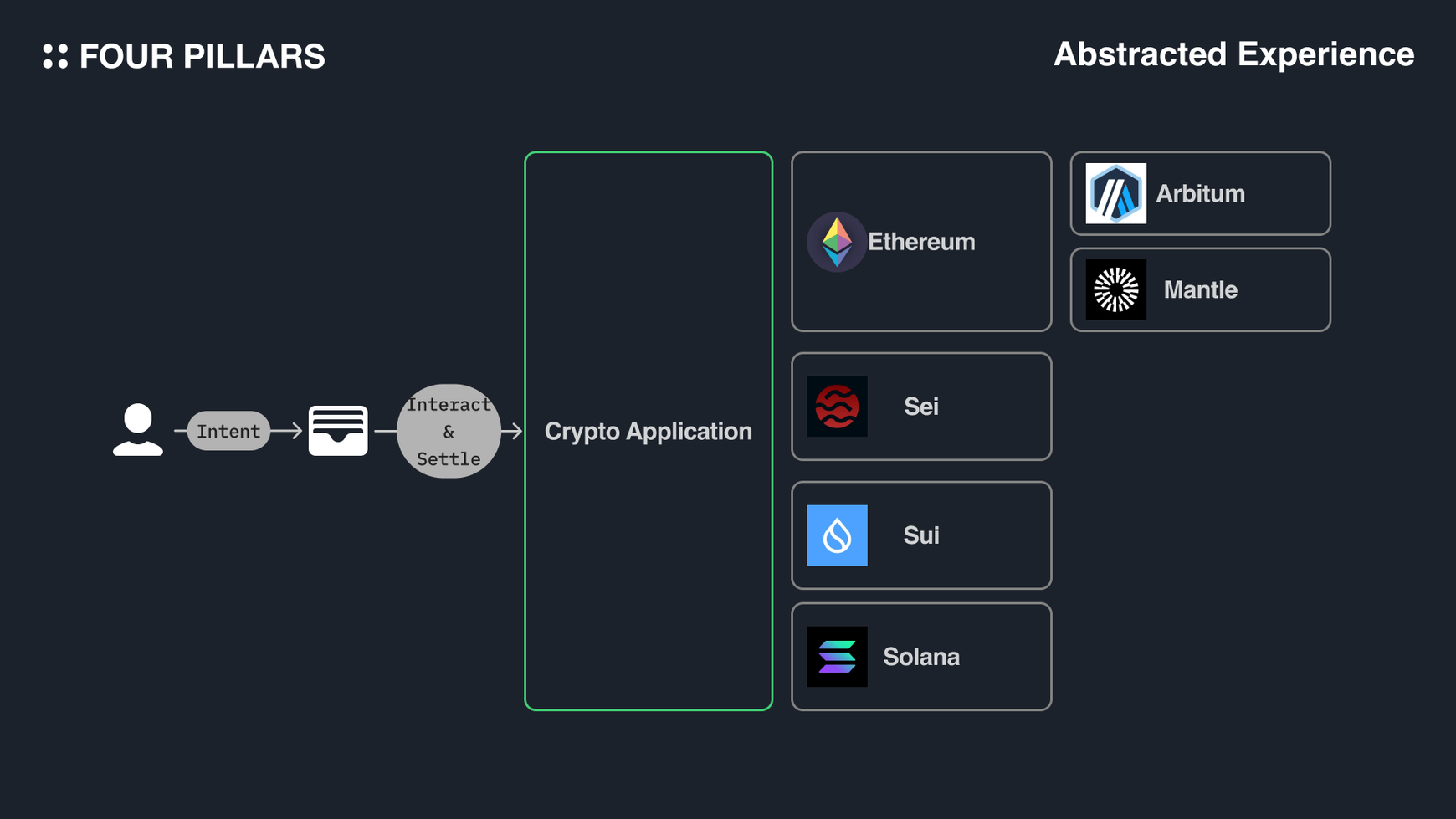
Seamless Multi-Chain DeFi Aggregation: Socket allows DeFi platforms to aggregate liquidity and execution across multiple blockchains, ensuring users always get the best rates and execution. This breaks down liquidity silos and enhances capital efficiency.
-
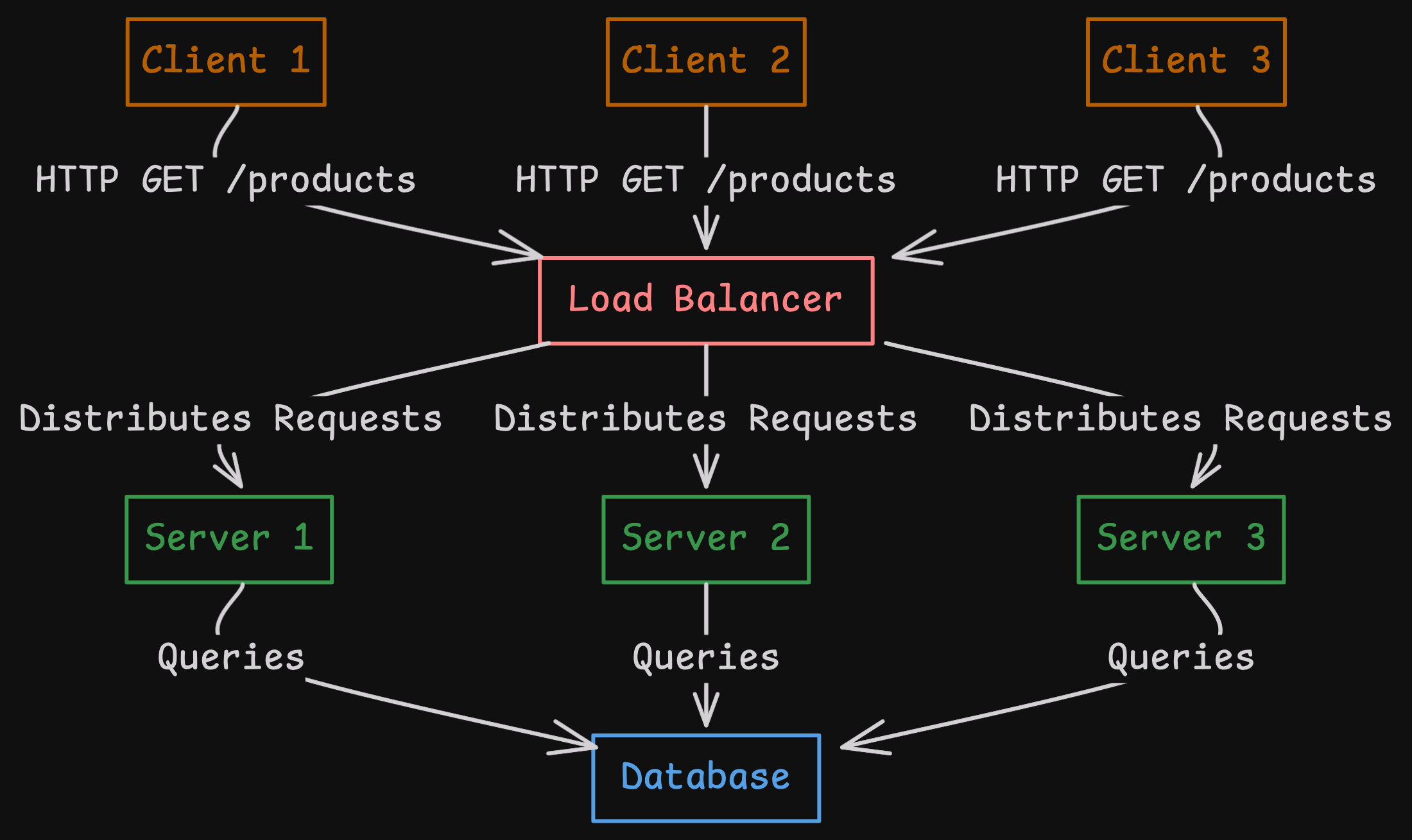
Frictionless User Onboarding: With chain abstraction, new users can access Web3 apps without managing multiple wallets or understanding different gas tokens. Socket’s infrastructure enables a web2-like onboarding experience, crucial for mainstream adoption.
-
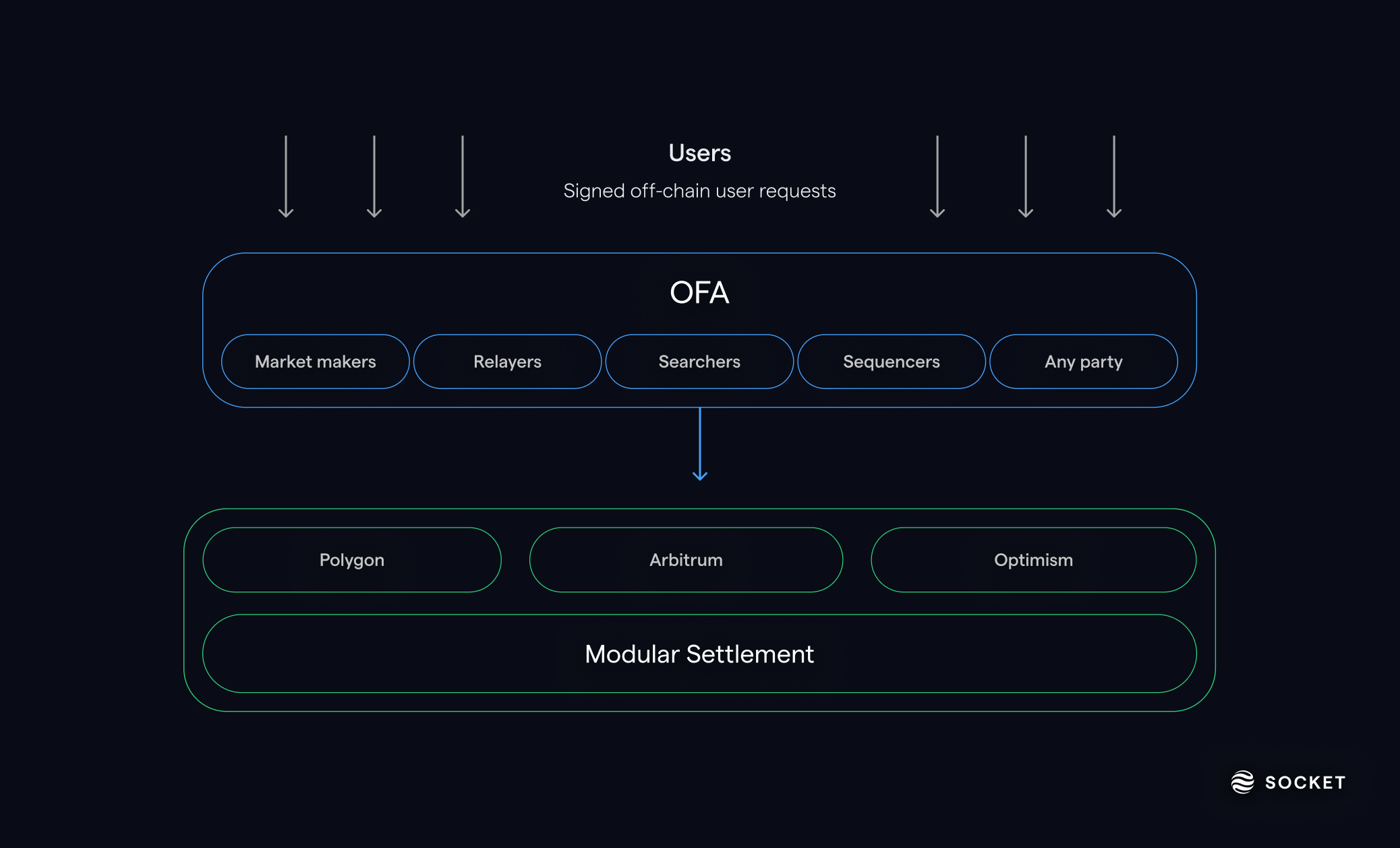
Composable Cross-Chain Workflows: Socket’s Modular Order Flow Auctions (MOFA) let developers compose complex workflows that interact with apps, users, and assets across chains. This unlocks advanced use cases like cross-chain swaps, lending, and NFT transfers in a single transaction.
Ultimately, breaking down Web3 silos is about more than technical integration, it’s about fostering an environment where innovation can flourish without artificial boundaries. Chain abstraction protocols like Socket are laying the foundation for a unified digital economy where users, assets, and ideas move freely across networks. For investors and builders focused on DePIN interoperability on Solana and beyond, staying attuned to these developments will be critical in capturing new sources of value as decentralized infrastructure enters its next phase.






